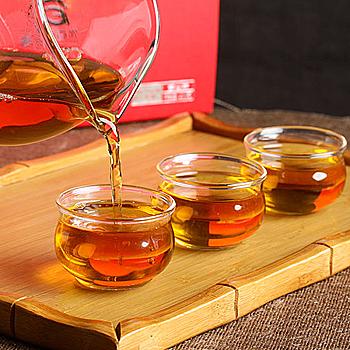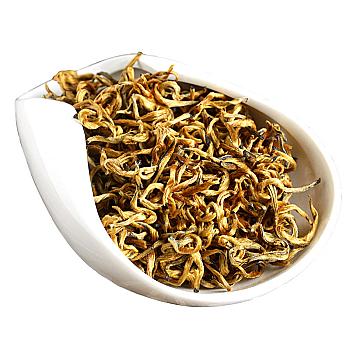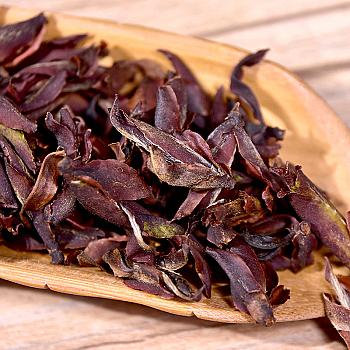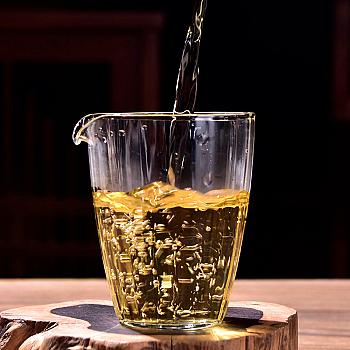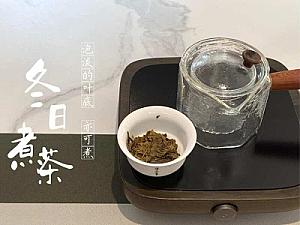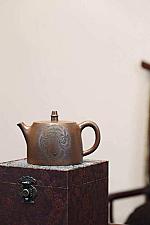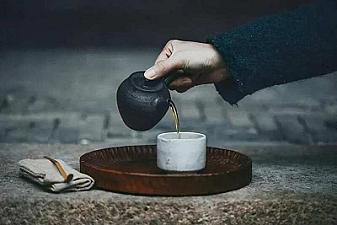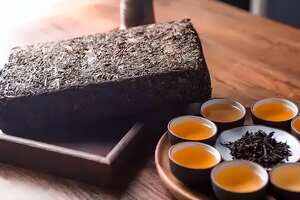
Can "gold flowers" in pu-erh tea be safely consumed?
August 14, 2025
Black tea is special, it's the only one in six major tea categories that can cultivate "gold flower" tea in the fermentation stage, but black tea that has been stored poorly and becomes moldy will also present yellow patches, easily confusing with "gold flower" bacteria. So, friends who like to drink black tea should not mistake moldy black tea for "gold flowers", nor should you mix up moldy ones as "gold flowers".
Black tea is special, as it's the only type of six big tea categories that can breed "jin hua" in fermentation section. But sometimes black tea with mold will also appear yellowish stripes and easily confuse with "jin hua", so friends who like drinking black tea should not mistake "jin hua" for mold, or vice versa!

One, what is the "Golden Flower" in black tea?
The "golden flowers" in black tea can look like mold and resemble toxic ochratoxin, which is why some people who don't know much about black tea immediately throw the leaves away when they see this phenomenon. However, the "golden flowers" on black tea are actually a type of beneficial probiotic bacteria called Corynebacterium glutamicum, which is harmless to humans and can even be considered a high-grade feature of black tea, with the saying "tea is good when gold flowers bloom; when gold flowers bloom, tea quality improves".

The "golden petals" of black tea, are visible to the naked eye, tiny yellow granules scattered on top of compressed tea leaves. They generally exist at the center of tea cakes and bricks, and must be broken open to see them. The golden petals are distinct individual grains that do not exhibit fuzzy mycelium like tea hairs do, and they are more firmly anchored in tea leaves than tea hairs are, so cannot be easily wiped off.
So, "Jin Hua" as beneficial bacteria with "tea leaves moldy" are by no means to be confused.

Two, what tea will have "gold flower"?
When it comes to "jin hua", the first thing that a veteran tea enthusiast would think of is Fu brick tea! Fu brick tea is the only black tea whose specification for "Crown pull apart fungus" (a type of beneficial bacteria) has been clearly stipulated in its national standard. And "jin hua" is the key process during the manufacturing of fu brick tea, whereby unique quality of fu brick tea is formed by controlling the temperature and humidity of the drying room to make the Crown pull apart fungus grow and multiply, thus producing a yellow sack called "jin hua".

Of course, besides Fuzhuan brick tea, white tea and Pu'er tea can also have "golden flowers"! In 2014, Mr. Lin Fei used Shuixian as the raw material to successfully develop "Golden Flower White Tea"; Pu'er tea can also grow "gold flowers", but the probability is extremely low, comparable to the iron tree blooming.

No matter whether it's Lu Shan Green Tea, white tea or Pu'er, the "golden flowers" in all these teas are generated during processing by special flower-making techniques. So if our tea leaves have produced "gold flowers" during later natural storage, this is very likely a type of aflatoxin, highly toxic and absolutely not to be consumed.
Three, how to distinguish between black tea "moldy" and "golden flowers"?
Dark tea's mold and "jinhua" are both yellow patchy, look very much the same, and for friends who are not particularly familiar with dark tea, it is difficult to distinguish between them, but actually there is a great difference between "jinhua" and mold. Now let's take a look at what's different about dark tea's "jinhua" and mold!
1. Different growth locations
As mentioned earlier, 'gold flowers' are generally located in the center of tea cakes and bricks, and can only be seen after being opened. Black teas turn moldy on the surface of the leaves themselves.

2. Different forms
"Gold Flower" is yellow granules which firmly stuck to the tea leaves and cannot be easily brushed away. Mold usually exists in a large piece of form, and must have mold hairs, which are very easy to blow away.

3. Different smells
Black tea, when fermented in certain conditions, can be stored for a long time and will develop its own aged aroma. The aromas include earthy, mellow and woody notes; whereas moldy black tea has an unpleasantly pungent odor reminiscent of plant rot.
4. Different tea bottoms
Under normal circumstances, the bottom of black tea is oily and has a luster due to fatty substances. It is relatively soft and elastic when touched. Moldy black tea lacks elasticity, crumbles easily when pinched apart, and breaks into pieces resembling powder with stickiness.

So those who enjoy drinking black tea should be aware of two situations that are easy to confuse with each other: mold and the golden flowers, which bring us two opposite effects. If you find out that your tea leaves have a problem, please make sure it is safe before drinking!
